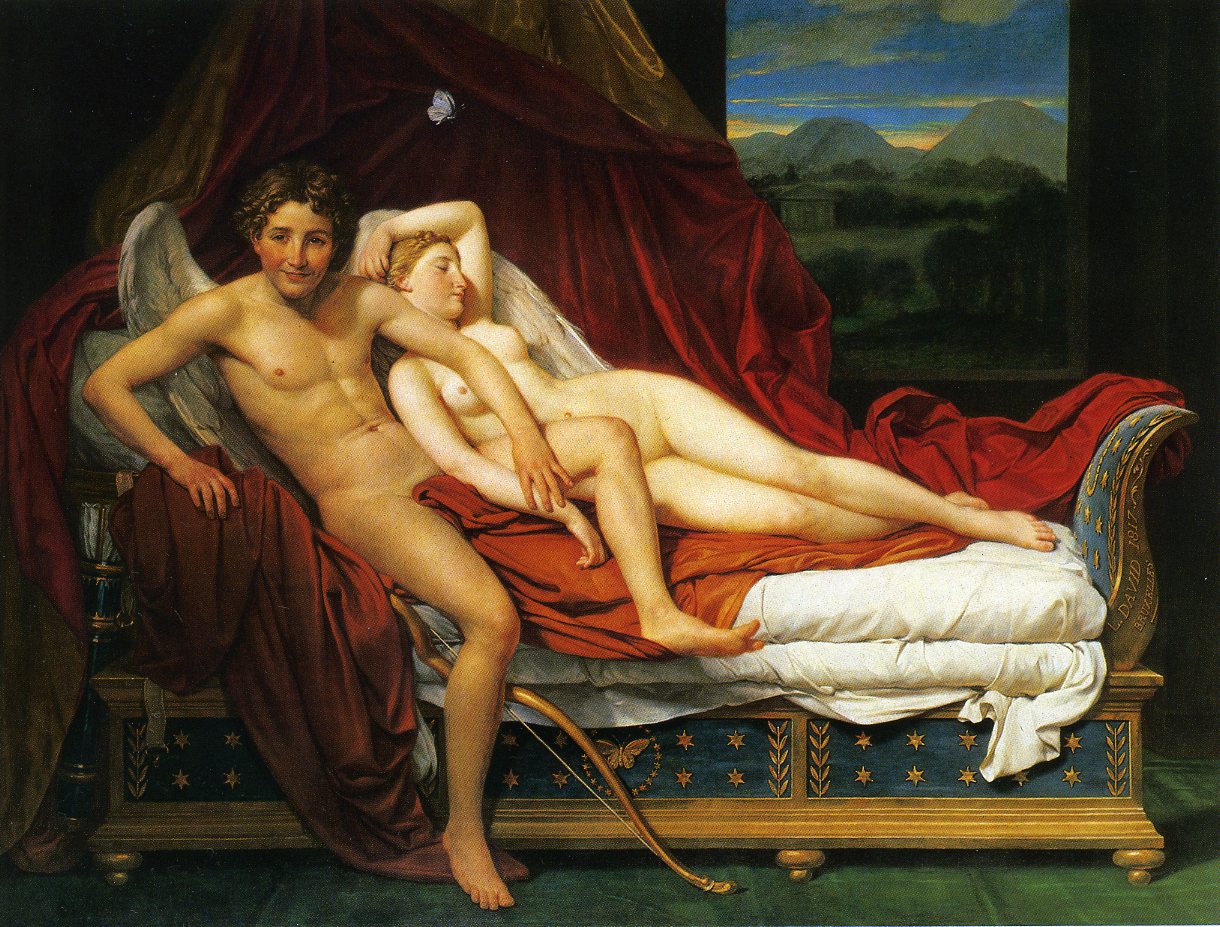Art for the Private Viewer - Cupid and Psyche
5:14 PM
Art for the Private Viewer
The Broad Usage of Sexual Figures in Art
Curated by Sree Balusu
 |
| Jacques-Louis David,Cupid and Psyche, 1817 |
"Cupid prepared to obey the commands of his mother. There are two fountains in Venus's garden, one of sweet waters, the other of bitter. Cupid filled two amber vases, one from each fountain, and suspended them from the top of his quiver, hastened to the chamber of Psyche, whom he found asleep. He shed a few drops from the bitter fountain over her lips, though the sight of her almost moved him to pity; then touched her side with the point of his arrow. At the touch she awoke, and opened eyes upon Cupid (himself invisible), which so startled him that in his confusion he wounded himself with his own arrow. Heedless of his wound, his whole thought now was to repair the mischief he had done, and he poured the balmy drops of joy over all her silken ringlets." Bulfinch's Mythology
After Cupid pierces himself with his own arrow, he falls in love with Psyche. He eventually starts to come stay with his wife only at night times, having to leave immediately at dawn. Cupid is the symbol of love and the meaning of "Psyche" is soul. Therefore, this painting shows the post-physical union of love and the soul.
Both Cupid and Psyche lie naked in bed. Cupid is getting out of bed ,while Psyche is still laying down on her side. The painting accentuates Psyche's hips and curvaceous figure to increase the sensuality of the scene. Her white form and figure represent, ironcially, purity and beauty. Cupid has a smile on his face and the bow pointed toward the ground symbolizes his, ahem, satisfaction. While both subjects of the painting are naked, David uses the positions of Cupid and Psyche's bodies to provide an interesting contrast between innocence/purity and sexual desire/satisfaction.
David's Cupid and Psyche is one work of art that proves that it is not nudity itself that necessarily provides the sexual tone in art, but rather the position and physical orientation of each subject's body.
0 comments